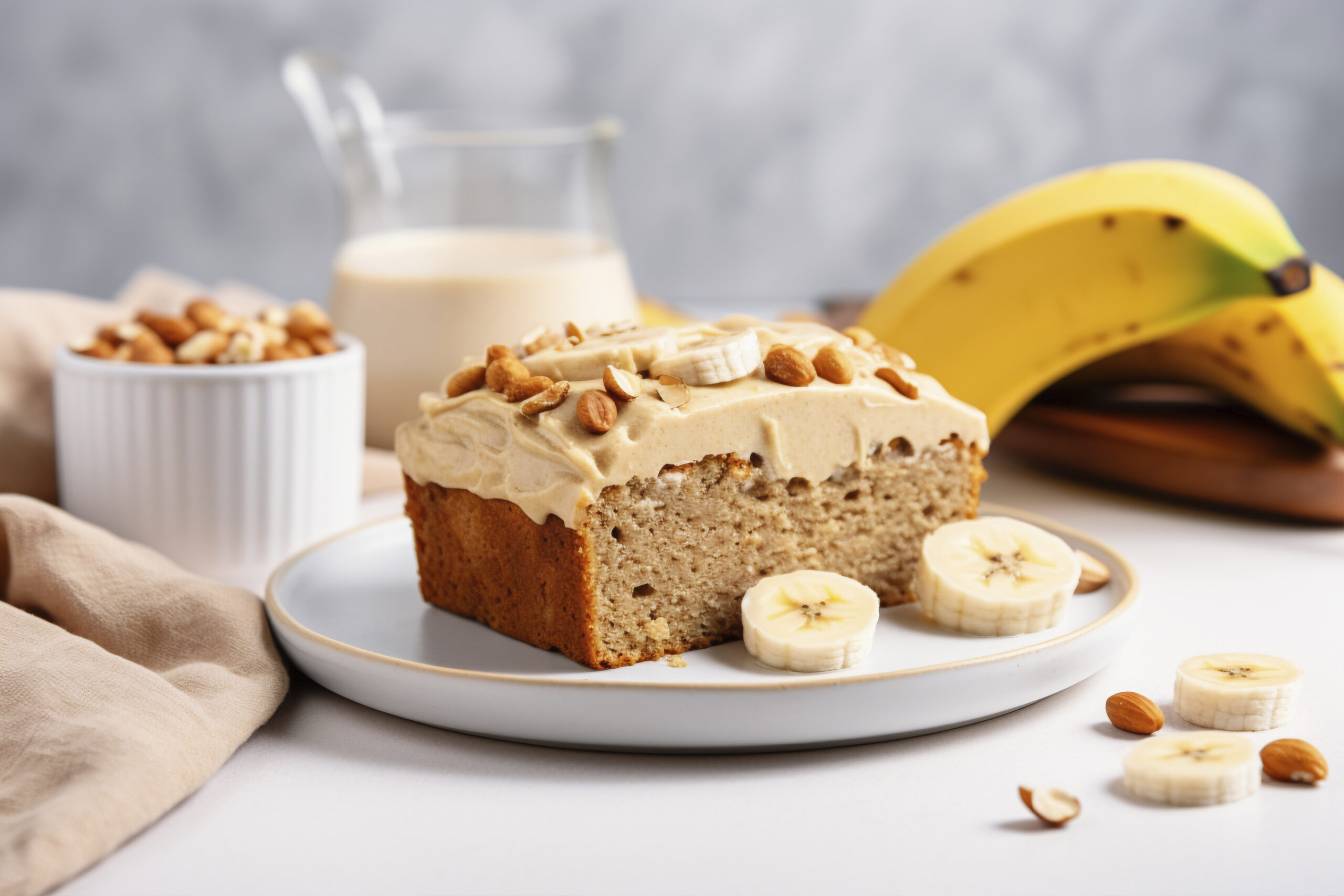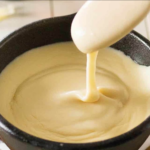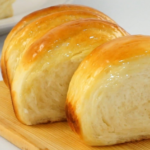Introduction: The Magic of Almond Cake Recipe
There’s something deeply comforting about baking. Whether you’re a seasoned baker or someone just getting started, the act of transforming raw ingredients into something delicious is nothing short of magical. Today, I want to talk about one of my favorite recipes: almond cake recipe . Almonds, with their delicate yet distinct flavor, lend themselves perfectly to this cake, creating a soft, moist crumb that melts in your mouth. Over the years, I’ve experimented with different versions of almond cake, tweaking ingredients and methods, and I’m excited to share my ultimate recipe along with all the tips and secrets I’ve learned along the way.
A Brief History of Almond Cakes
Before diving into the recipe itself, let’s take a moment to appreciate the almond’s journey into the world of baking. Almonds have been cultivated for thousands of years, dating back to ancient civilizations in the Mediterranean region. Almond trees were prized not only for their nutritious seeds but also for their symbolic meaning in various cultures. The nut has long been associated with fertility, prosperity, and good fortune.
Almond cakes, in particular, can be traced back to European traditions, especially in countries like Spain, France, and Italy. In Spain, for example, the tarta de Santiago is a famous almond cake traditionally made in the Galician region. Meanwhile, in Italy, Torta di Mandorle is a popular dessert often enjoyed with a dusting of powdered sugar or a drizzle of lemon glaze. These cakes, though simple, are cherished for their rich flavor and versatility.
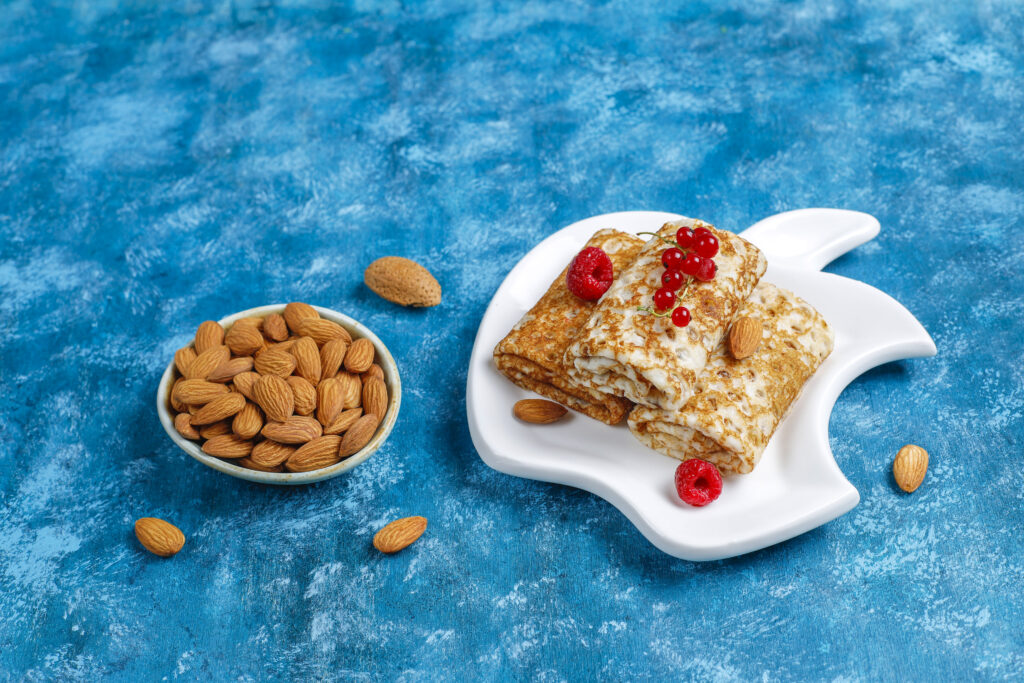
Why Almond Cake?
So, why almond cake? You might be wondering what makes this cake stand out among the myriad of desserts you could bake. Well, for one, it’s gluten-free (if you choose to use almond flour alone), which makes it a fantastic option for those with dietary restrictions. But even beyond that, it’s the texture and flavor that truly make this cake shine.
Unlike a regular flour-based cake, almond cake has a dense yet tender crumb. It’s moist without being too heavy and carries the nutty, slightly sweet flavor of almonds in every bite. The natural oils in almonds keep the cake from drying out, ensuring it stays fresh for longer than many other cakes.
For me, it’s the versatility that keeps me coming back to this recipe. You can make a simple almond cake with just a handful of ingredients, or you can elevate it with a variety of add-ins and toppings. Fresh fruits, citrus zest, spices, and even liqueurs can all be incorporated to create a version of almond cake that suits your taste or the occasion.
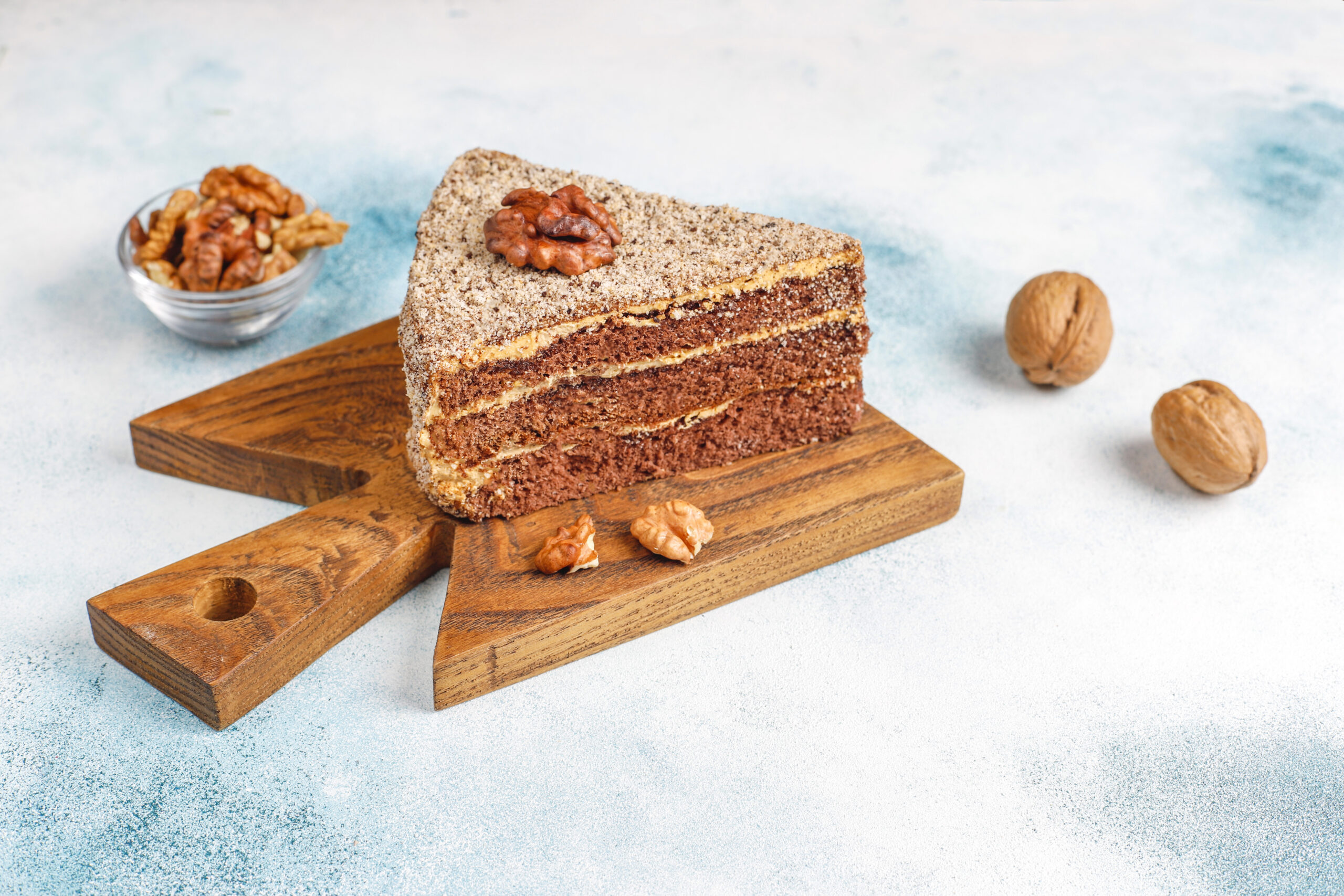
almond cake recipe
Ingredients
Method
- Preheat Your Oven
- Mix the Dry Ingredients:
- Beat the Eggs and Sugar
- Add the Wet Ingredients
- Combine the Dry and Wet Mixtures
- Bake:
- Cool and Serve
Ingredients Breakdown
Before we jump into the recipe, let’s take a closer look at the key ingredients. Understanding why and how each ingredient works will make you a better baker and allow you to tweak the recipe if needed.
Almond Flour
At the heart of any almond cake is almond flour, which is made from finely ground blanched almonds. Almond flour differs from almond meal, which is typically made from almonds with the skin still on and has a coarser texture. For this recipe, we’ll be using almond flour because it provides a finer texture that results in a smoother cake.
If you don’t have almond flour on hand, you can make your own by pulsing blanched almonds in a food processor until they are finely ground. Just be careful not to over-process them, as you could end up with almond butter!
Eggs
Eggs serve multiple functions in this almond cake recipe. They act as a binding agent, provide structure, and contribute to the cake’s moisture. The proteins in the eggs help the cake rise while maintaining its rich, tender crumb. Using room-temperature eggs will ensure they incorporate more easily into the batter, leading to a smoother texture.
For those with dietary restrictions or allergies, you can experiment with egg replacements, though it may slightly alter the texture.
Sugar
Sugar adds sweetness and contributes to the cake’s moistness. In this recipe, I typically use granulated white sugar, but you can also experiment with brown sugar, coconut sugar, or even honey for a different flavor profile. For a healthier version, you can reduce the amount of sugar, but keep in mind that it may affect the cake’s texture and sweetness.
Butter (or Oil)
Butter is traditionally used in almond cakes for its rich flavor and moisture. I prefer using unsalted butter because it allows you to control the amount of salt in the recipe. That being said, you can substitute butter with oil (such as olive oil or coconut oil) if you prefer. Each fat will impart a slightly different flavor and texture to the cake, so feel free to experiment and see which one you like best.
Baking Powder
Although almond cake is often denser than a regular cake, baking powder helps give it a bit of lift. It’s important to use fresh baking powder, as old or expired baking powder won’t be as effective and could result in a flat cake.
Salt
A pinch of salt goes a long way in balancing out the sweetness of the cake and enhancing the almond flavor. Even in desserts, salt is crucial for rounding out the flavors.
Optional Add-Ins
This is where you can get creative. Almond cake is a blank canvas that can be flavored in many different ways. Some popular additions include:
- Citrus zest (lemon or orange) for a bright, fresh flavor
- Vanilla extract for warmth and depth
- Almond extract to amplify the almond flavor
- Spices like cinnamon or cardamom for a hint of warmth
- Liqueurs such as Amaretto or Grand Marnier for a boozy twist
- Fresh fruits like berries or figs for added moisture and flavor
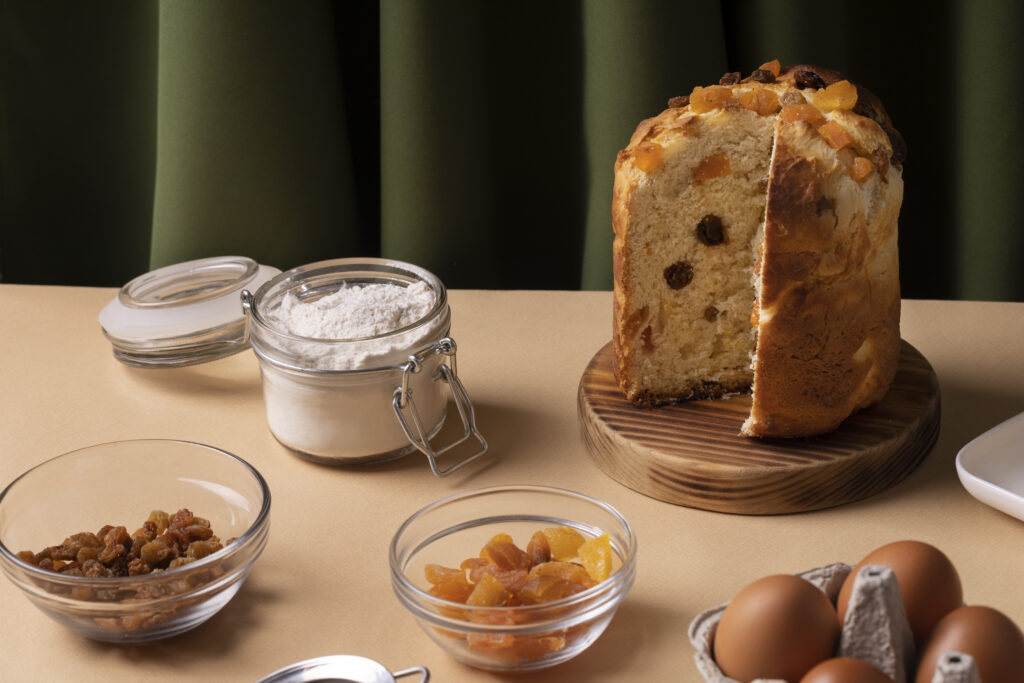
The Recipe: Classic Almond Cake
Now, let’s get to the heart of this blog post: the recipe. Below is my tried-and-true almond cake recipe that never fails to impress. It’s simple enough for beginners yet delicious enough to wow at any gathering.
Ingredients:
- 2 cups almond flour
- 4 large eggs, at room temperature
- ¾ cup granulated sugar
- ½ cup unsalted butter, melted and slightly cooled
- 1 tsp vanilla extract
- ½ tsp almond extract (optional)
- 1 tsp baking powder
- ¼ tsp salt
- Zest of 1 lemon (optional)
Instructions:
- Preheat Your Oven: Begin by preheating your oven to 350°F (175°C). Grease an 8-inch round cake pan and line the bottom with parchment paper. This will ensure that your cake doesn’t stick and comes out cleanly.
- Mix the Dry Ingredients: In a medium bowl, whisk together the almond flour, baking powder, and salt. If you’re adding any spices or citrus zest, you can mix them in at this stage.
- Beat the Eggs and Sugar: In a separate large bowl, beat the eggs and sugar together using an electric mixer or a whisk. Continue beating until the mixture becomes pale and slightly thickened, which should take about 3-4 minutes.
- Add the Wet Ingredients: Slowly pour in the melted butter while continuing to whisk. Then add the vanilla extract and almond extract (if using). If you’re adding any liqueur, now’s the time to mix it in as well.
- Combine the Dry and Wet Mixtures: Gradually fold the almond flour mixture into the wet ingredients using a spatula. Be careful not to overmix; you want the batter to be well combined but still light and airy.
- Bake: Pour the batter into the prepared cake pan and smooth the top with a spatula. Bake for 25-30 minutes, or until a toothpick inserted into the center comes out clean. The top of the cake should be golden brown, and the edges should pull away slightly from the pan.
- Cool and Serve: Allow the cake to cool in the pan for about 10 minutes before transferring it to a wire rack to cool completely. You can serve the cake as is or dust it with powdered sugar for a simple, elegant finish.
Variations and Twists
Once you’ve mastered the basic almond cake recipe, there are countless ways to make it your own. Here are a few variations to try:
- Lemon Almond Cake: Add the zest of two lemons to the batter and drizzle with a simple lemon glaze made from powdered sugar and lemon juice.
- Chocolate Almond Cake: Melt ½ cup of dark chocolate and fold it into the batter for a rich, chocolatey twist. You can also add chocolate chips for extra decadence.
- Berry Almond Cake: Before baking, fold in 1 cup of fresh berries (such as raspberries, blueberries, or blackberries). The tartness of the berries pairs beautifully with the sweetness of the cake.
- Spiced Almond Cake: Add 1 teaspoon of cinnamon and ¼ teaspoon of nutmeg or cardamom to the dry ingredients for a warm, spiced version.
- Almond and Coconut Cake: Substitute half of the almond flour with shredded coconut for a tropical flavor. You can also add a coconut glaze or sprinkle toasted coconut on top.
Tips for Success
Here are a few tips that I’ve picked up over the years to ensure your almond cake turns out perfect every time:
- Use Fresh Almond Flour: Almond flour can go rancid if not stored properly, so make sure to use fresh almond flour for the best flavor. Store any unused flour in the fridge or freezer to extend its shelf life.
- Room Temperature Ingredients: Using room temperature eggs and butter helps create a smooth, even batter. Cold ingredients can cause the batter to curdle, which may affect the texture of the cake.
- Don’t Overbake: Almond cake is meant to be moist, so be careful not to overbake it. Keep an eye on the cake as it nears the end of the baking time, and use the toothpick test to check for doneness.
- Let It Rest: While it’s tempting to dive into the cake right away, allowing it to cool completely will help the flavors meld and improve the texture.
- Gluten-Free Option: Since almond flour is naturally gluten-free, this cake is a great option for those with gluten sensitivities. Just make sure all of your other ingredients (like baking powder) are certified gluten-free if needed.
Serving Suggestions
Almond cake is incredibly versatile and can be served in a variety of ways, depending on the occasion. For a simple, everyday treat, I love serving it with a dusting of powdered sugar and a cup of tea. If you’re feeling fancier, you can top it with fresh whipped cream and berries, or drizzle it with a citrus glaze. A scoop of vanilla ice cream on the side also complements the cake’s nutty flavor perfectly.
For a more indulgent dessert, serve the cake warm with a dollop of mascarpone or a spoonful of fruit compote. If you’re making the cake for a special occasion, you can even layer it with almond-flavored buttercream or chocolate ganache.
The Science of Baking Almond Cake Recipe
While almond cake might seem straightforward, there’s actually quite a bit of science behind the process. Understanding how the ingredients interact can help you troubleshoot any issues that arise and tweak the recipe to suit your preferences.
Almond Flour and Moisture: Almond flour is much higher in fat than regular wheat flour, which is why almond cakes tend to be more moist and tender. The natural oils in the almonds help to keep the cake from drying out, even after several days. However, this also means that almond cakes can sometimes feel denser than traditional cakes.
Eggs as Leavening Agents: Eggs are crucial in almond cake recipes because they provide structure and lift. When beaten with sugar, the eggs create air bubbles that help the cake rise. This is especially important in gluten-free baking, where there is no gluten to provide structure. For a lighter cake, you can experiment with whipping the egg whites separately and folding them into the batter at the end.
Sugar and Texture: Sugar does more than just sweeten the cake. It also affects the texture by tenderizing the batter and helping to trap air during the mixing process. Reducing the sugar too much can result in a denser, less tender cake.
Butter vs. Oil: Butter and oil can both be used in almond cake, but they affect the texture differently. Butter adds flavor and creates a slightly denser, more crumbly texture, while oil results in a lighter, more moist cake. If you prefer a dairy-free option, feel free to substitute butter with olive oil or coconut oil
Conclusion:
Almond cake is truly one of those recipes that everyone should have in their repertoire. It’s simple to make, incredibly versatile, and always delicious. Whether you’re making it for a casual family gathering or a special occasion, it’s a cake that’s sure to impress. I hope this post has inspired you to give almond cake a try, and I can’t wait to hear how you make it your own!
1. Can I make the almond cake ahead of time?
Yes! In fact, almond cake tends to taste even better the day after it’s baked, as the flavors have time to meld. You can bake the cake up to 2 days in advance and store it in an airtight container at room temperature. If you want to keep it for longer, you can refrigerate it or freeze it for up to 3 months.
2. How can I make the cake more moist?
Almond cake is naturally moist, but if you want to make it even more so, try adding a tablespoon of Greek yogurt or sour cream to the batter. You can also brush the finished cake with a simple syrup made from equal parts sugar and water to add extra moisture and sweetness.
3. Can I make almond cake without eggs?
Yes, though the texture will be slightly different. You can replace the eggs with a flaxseed or chia seed mixture (1 tablespoon of ground seeds mixed with 3 tablespoons of water per egg) or use a commercial egg replacer.
4. Can I make cupcakes instead of a cake?
Absolutely! You can use this almond cake batter to make cupcakes instead of a full cake. Simply divide the batter evenly among a lined cupcake tin and bake at the same temperature. The baking time will be shorter, around 15-20 minutes, so keep an eye on them.
5. How do I store almond cake?
Store almond cake in an airtight container at room temperature for up to 3 days, or in the fridge for up to a week. If you’re freezing the cake, wrap it tightly in plastic wrap and store it in a freezer-safe bag for up to 3 months. Thaw the cake at room temperature before serving.
